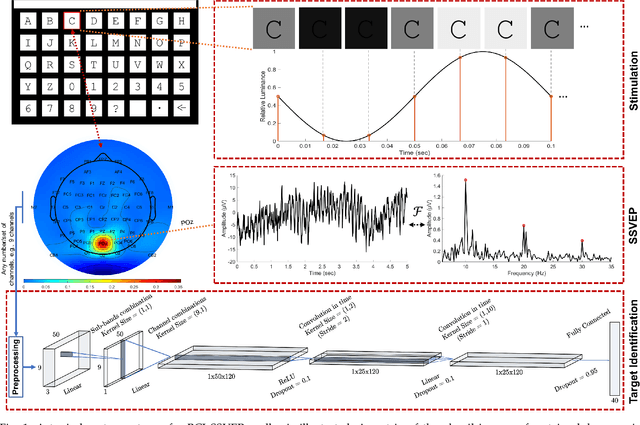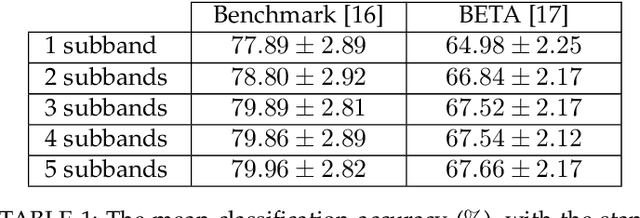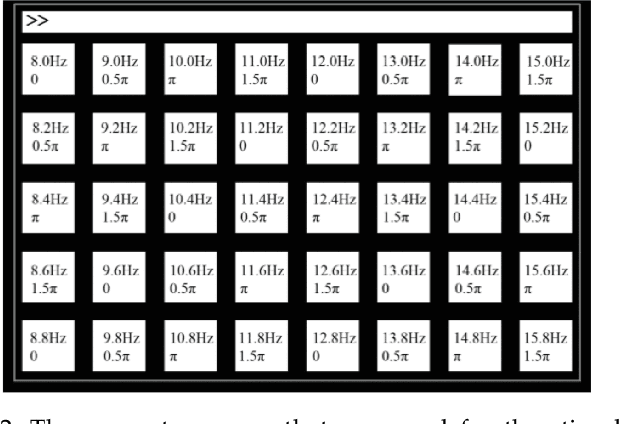A Deep Neural Network for SSVEP-based Brain-Computer Interfaces
Paper and Code
Dec 03, 2020



Target identification in brain-computer interface (BCI) spellers refers to the electroencephalogram (EEG) classification for predicting the target character that the subject intends to spell. When the visual stimulus of each character is tagged with a distinct frequency, the EEG records steady-state visually evoked potentials (SSVEP) whose spectrum is dominated by the harmonics of the target frequency. In this setting, we address the target identification and propose a novel deep neural network (DNN) architecture. The proposed DNN processes the multi-channel SSVEP with convolutions across the sub-bands of harmonics, channels, time, and classifies at the fully connected layer. We test with two publicly available large scale (the benchmark and BETA) datasets consisting of in total 105 subjects with 40 characters. Our first stage training learns a global model by exploiting the statistical commonalities among all subjects, and the second stage fine tunes to each subject separately by exploiting the individualities. Our DNN strongly outperforms the state-of-the-art on both datasets, by achieving impressive information transfer rates 265.23 bits/min and 196.59 bits/min, respectively, with only 0.4 seconds of stimulation. To our best knowledge, our rates are the highest ever reported performance results on these datasets. The code is available for reproducibility at https://github.com/osmanberke/Deep-SSVEP-BCI.
 Add to Chrome
Add to Chrome Add to Firefox
Add to Firefox Add to Edge
Add to Edge